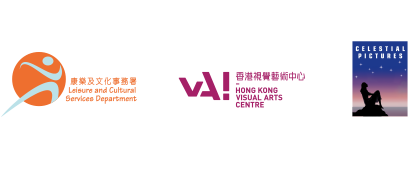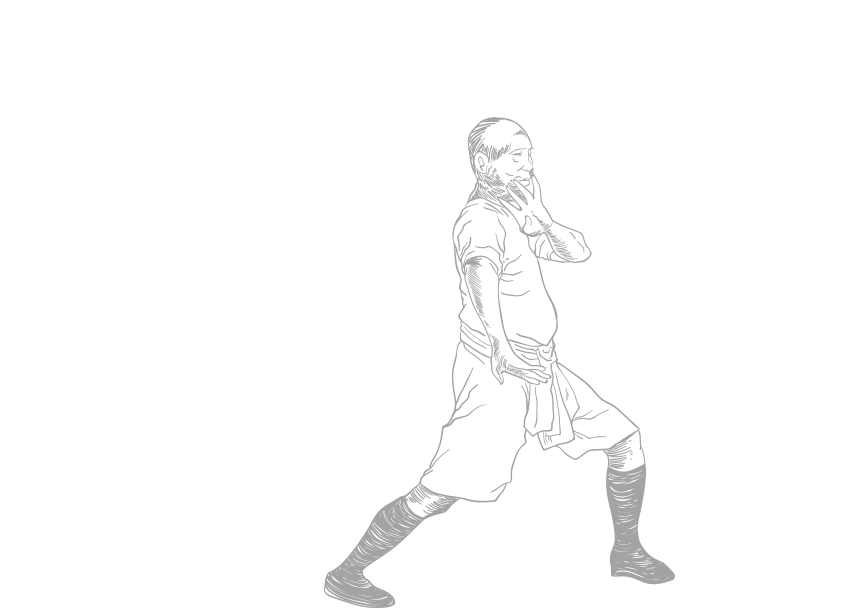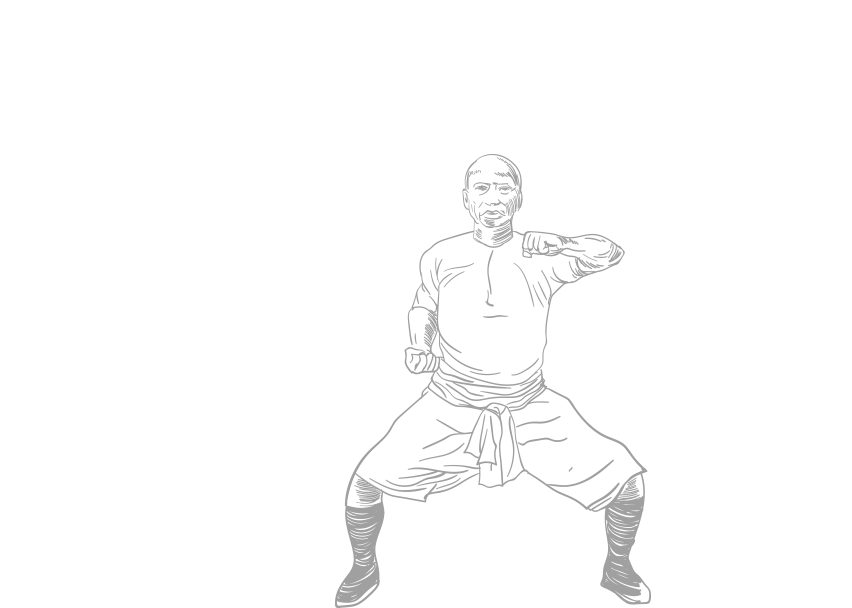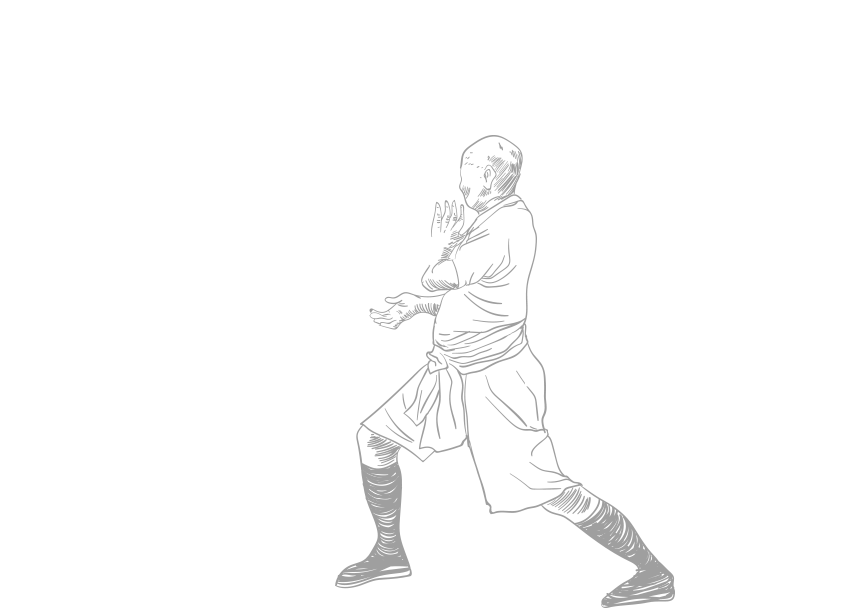

香港是中國傳統武術的重要樞紐之一,自20世紀中更成為世界功夫電影之都。
功夫既是社區文化的一部分,同時為香港電影重要的元素,兩者之間的互動,造就了獨特並具有魅力的香港文化,
把以功夫為代表的中華文化推往國際。如今,功夫已昇華為中華文化中最重要並廣為人知的標記。
另一方面,自1949年以降,電影成為大眾認識功夫的主流媒介,對中國武術發展具有深遠的影響。
民間武術與影視的互動與融合創造了香港功夫電影,而最早結合功夫與大眾傳媒的則是嶺南洪拳。
20世紀初,洪拳盛行於廣東。回應大時代傳統文化的更新,嶺南洪拳大家林世榮(1860-1943年)進行對中國武術現代化和普及化的改革,
堪稱廣東武術現代化的先驅。民國初期,林氏開始在香港開展武術活動,至30年代攜同家眷移居香江,並以此為總部。
戰後,林家繼續在香港引領武林的發展;60年代始,林家洪拳的門人陸續移居海外,嶺南洪拳便成為最早揚名海外的拳種,之後逐漸壯大,
發展成國際上最廣為人知、最受歡迎的功夫流派之一。
同時,林世榮之徒劉湛是第一位在大銀幕上飾演其師的演員,他為功夫電影引入全新元素——真實武打——是揉合電影與真功夫的第一人。
其子,已故傳奇武術演員、指導、導演劉家良(1934-2013年),所創作的電影作品別具個人風格,在70至80年代成為功夫電影主流,
影響之深遠延至今天。
洪拳也是早年功夫電影和其他媒體的創作泉源。在搬上大銀幕前,洪拳和一眾洪拳名家早已成為多部流行小說的題材,
包括黃飛鴻(1847-1924年)和林世榮的傳記小說,後來更製成膾炙人口的廣播劇《黃飛鴻與林世榮》。這些作品大受歡迎,
於是改編成電影,當中包括黃飛鴻經典黑白電影。本展覽透過林氏、劉氏兩個傳奇武術家庭,追溯民間武術、功夫電影在香港70年來的雙線軌跡。
Hong Kong is one of the most important Chinese martial arts centres and, since the mid-20th century,
the de facto capital for kung fu cinema. The interaction between kung fu as community practice and as cinema is
not only a defining characteristic of Hong Kong culture, it also played a key role in forging transnational Chinese
identity and engendering a global fascination with Chinese martial arts. Kung fu became one of the most powerful
symbols for Chinese culture, while film representations came to dominate popular perception of Chinese martial arts.
Significantly, the interactions between kung fu practice and cinematic representations began with Lingnan Hung Kuen.
Hung Kuen was a preeminent kung fu style in Guangdong in the early 20th century, while its patriarch, Lam Sai Wing (1860–1943),
spearheaded the movement to modernise and popularise Chinese martial arts in Southern China. In the 1930s, Lam Sai Wing and his
family established a foothold in Hong Kong, which eventually became their headquarters, and in so doing contributed to making
Hong Kong an important kung fu hub. From the 1960s, as students of Lam Family Hung Kuen migrated overseas, Hung Kuen became
internationalised, and in time grew into one of the most popular kung fu styles around the world.
Lau Jaam, one of Lam Sai Wing’s students, was the first actor to be cast in his master’s role, thus merging real kung fu
with the world of make-believe. Building on his legacy, his son, the legendary kung fu actor, choreographer and director
Lau Kar Leung (1934–2013) created a new cinematic language founded on his profound knowledge of traditional martial arts,
taking kung fu cinema to new heights in the 1970s and 1980s. His influence continues to be felt today.
Hung Kuen and its masters inspired several popular novels, notably the biographical novels of Wong Fei Hung (1847–1924) and
Lam Sai Wing, which later became the subject of a popular radio show “Wong Fei Hung and Lam Sai Wing”. The popularity of
these works led to film adaptations, resulting in the iconic black-and-white Wong Fei Hung films. Through the legendary
Lam and Lau families, this exhibition traces the parallel development of kung fu practice and cinema in Hong Kong over the
course of the past seventy years.
Hung Kuen was a preeminent kung fu style in Guangdong in the early 20th century, while its patriarch, Lam Sai Wing (1860–1943), spearheaded the movement to modernise and popularise Chinese martial arts in Southern China. In the 1930s, Lam Sai Wing and his family established a foothold in Hong Kong, which eventually became their headquarters, and in so doing contributed to making Hong Kong an important kung fu hub. From the 1960s, as students of Lam Family Hung Kuen migrated overseas, Hung Kuen became internationalised, and in time grew into one of the most popular kung fu styles around the world.
Lau Jaam, one of Lam Sai Wing’s students, was the first actor to be cast in his master’s role, thus merging real kung fu with the world of make-believe. Building on his legacy, his son, the legendary kung fu actor, choreographer and director Lau Kar Leung (1934–2013) created a new cinematic language founded on his profound knowledge of traditional martial arts, taking kung fu cinema to new heights in the 1970s and 1980s. His influence continues to be felt today.
Hung Kuen and its masters inspired several popular novels, notably the biographical novels of Wong Fei Hung (1847–1924) and Lam Sai Wing, which later became the subject of a popular radio show “Wong Fei Hung and Lam Sai Wing”. The popularity of these works led to film adaptations, resulting in the iconic black-and-white Wong Fei Hung films. Through the legendary Lam and Lau families, this exhibition traces the parallel development of kung fu practice and cinema in Hong Kong over the course of the past seventy years.

















